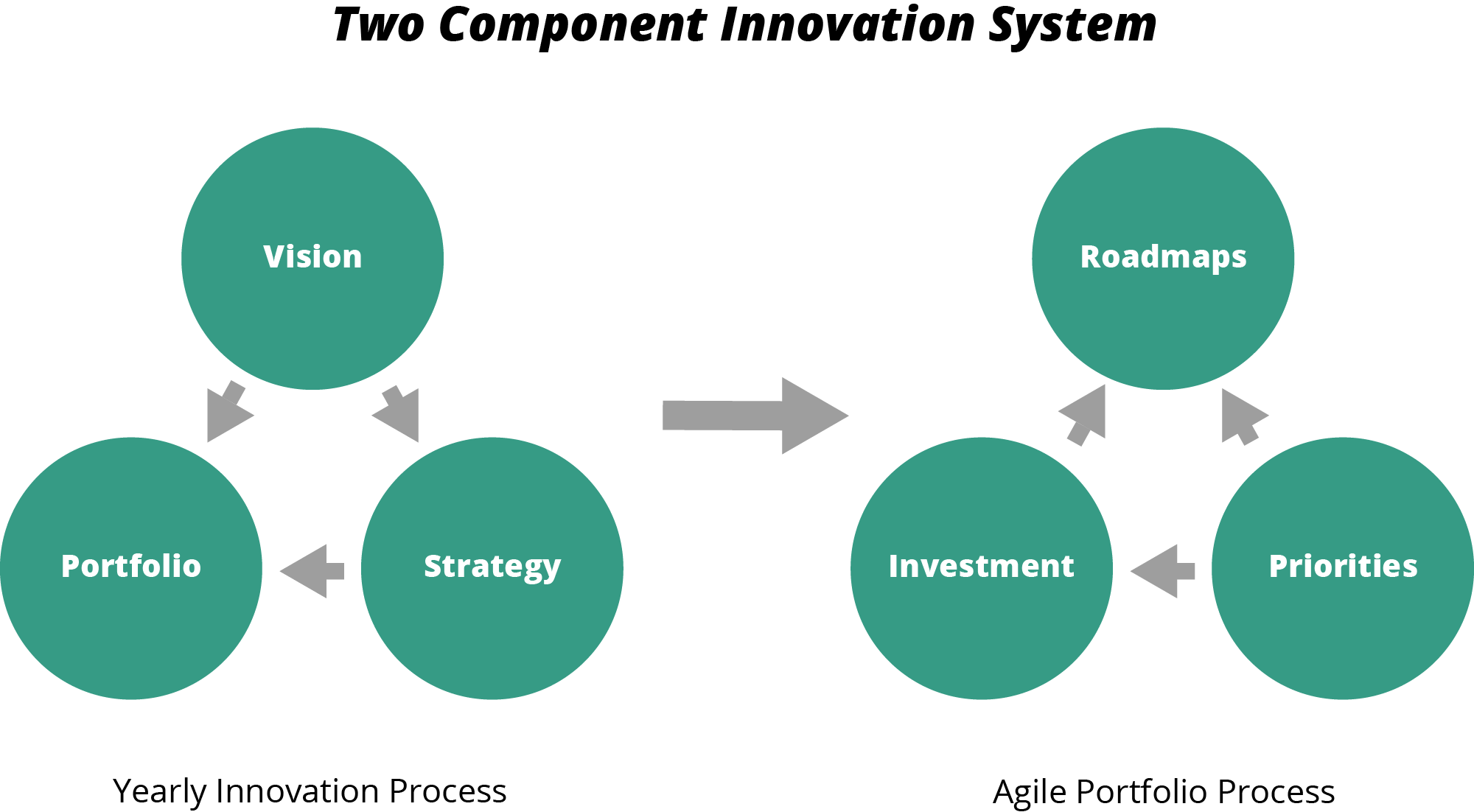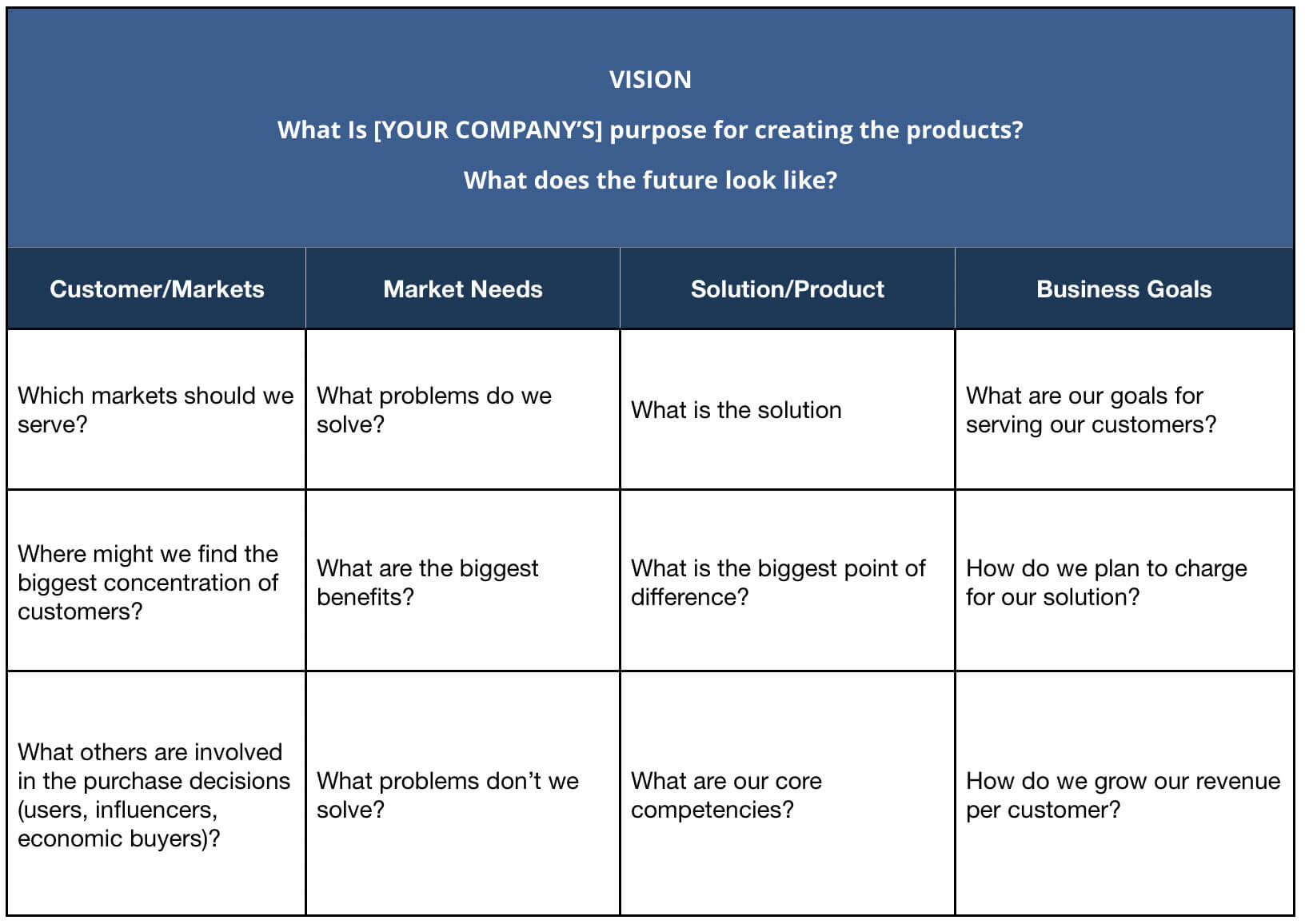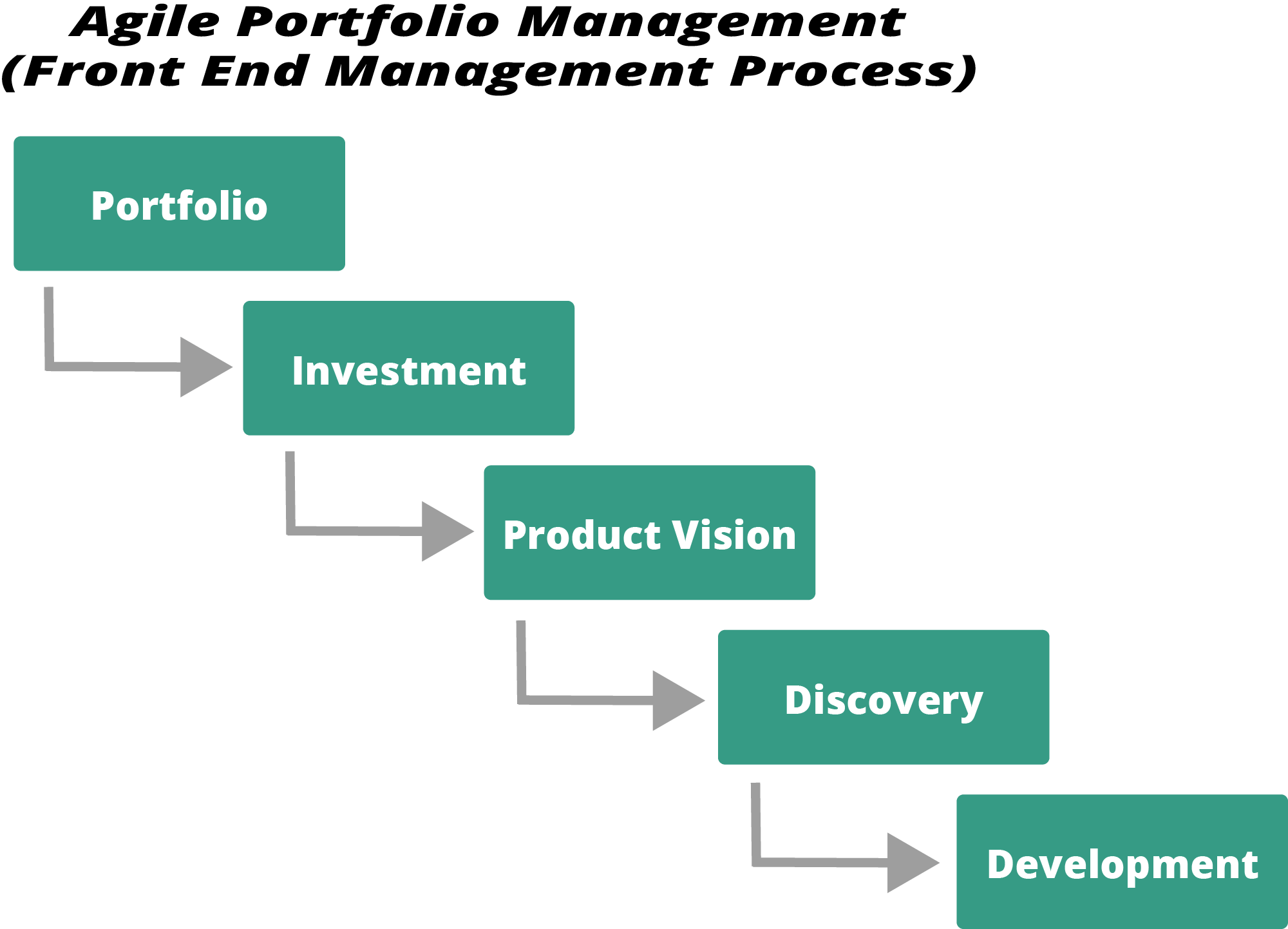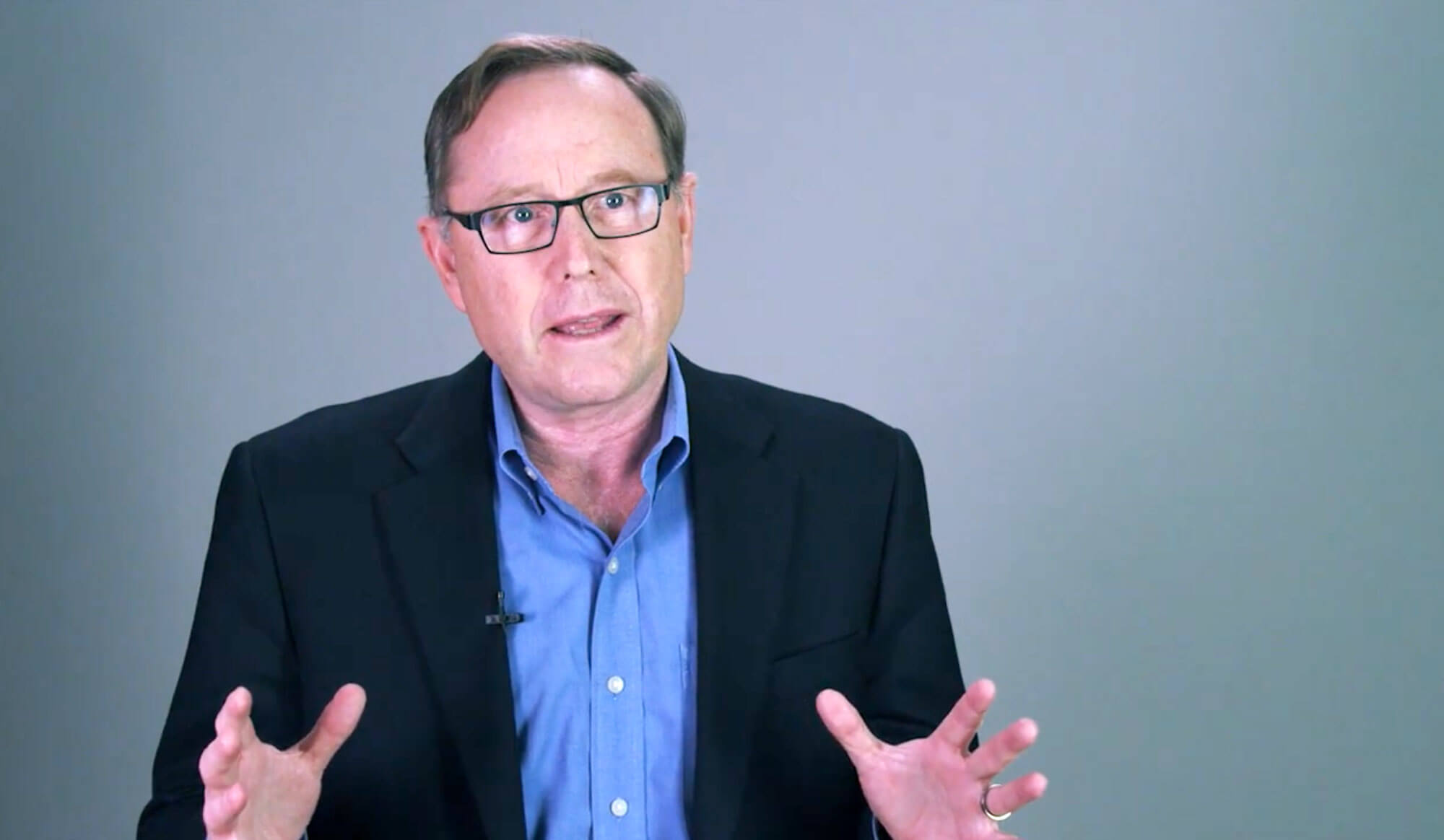Product Portfolio Management: Connecting a Vision to Strategy and Budgets
– Select only the very best new product concepts for your product portfolio
Most large organizations aren’t hurting for ideas. Everyone from the CEO to a programmer on her first assignment has an idea.
But these product concepts that come from both above and below need a management system. They are assets and you need to manage them as components of a highly valuable portfolio of product concepts.
One of the most difficult and important aspects of product portfolio management is selecting which ideas among this range of ideas to pursue. You need a process for selecting projects that you will move from an initial vetting status, to full-fledged projects with a funded, staffed, cross-functional team.
But how can you reduce the risks in selecting the winners to move into the pipeline? How can you make a selection that reflects your best investments in new ideas? Can you even manage ideas that are nothing more than a drawing on the back of a napkin?
Yes, you can. Here's how.
A way that has been proven to work with leading companies is to have two interlinked systems for managing this front end of innovation development.
Two Systems for Portfolio Management
The truth is that you can manage early stage product concepts, and grow them in your greenhouse until they’re ready to be transplanted into your product portfolio. Portfolio Management is one of the most common forms of a product development strategy because it allows managers to trade risk versus return, and is, in many ways, similar to investing.
What you need are two interlinked systems that help you select and grow only the best products:
- An annual, systematic portfolio planning process, tied to budgeting, and
- An ongoing, agile, portfolio management process for:
- Selecting emerging product concepts aligned with the company’s strategy
- Prioritizing and initiating work on new product concepts

The Yearly Planning Process
The yearly strategic portfolio planning process is just one aspect of your company’s larger strategic plan. An annual strategic plan martials all of the assets and capital available to the company. The strategic portfolio planning process, by selecting new product concepts, is a subset of that larger, annual strategic planning process.
This yearly strategic product portfolio planning process then provides an input for an ongoing process at the team manager level that nurtures new product ideas and brings them to the threshold of full development, where they are fully-funded and staffed.
The annual product planning process links together the company’s vision, usually encompassing a three-to-five-year time horizon, with the strategic steps, over a one-to-two-year horizon, required to realize that vision.
 It then connects the product portfolio strategy to product and technology roadmaps – graphical representations that enable decision-making. Roadmaps allow managers to see the progression of products and technologies, and their changing relationships over time.
It then connects the product portfolio strategy to product and technology roadmaps – graphical representations that enable decision-making. Roadmaps allow managers to see the progression of products and technologies, and their changing relationships over time.
These roadmaps then need to connect to the yearly budgeting process that prioritizes these future products, and provides them with the resources they need in their early stages.
A viable product development strategy begins with:
- A vision: a broad statement of where you’d like your company to be (3-5-year horizon)
- A strategic plan for product development: steps you intend to take to achieve that vision (2-3-year horizon)
- Product and technology roadmaps, project priority lists and budgets, connected to specific programs that realize the strategy

The Ongoing Process
The annual portfolio planning process and the ongoing management of new product concepts are tied to one another but distinct. Strategy without ongoing management is nothing more than wishful thinking.
On the other hand, managing product concepts absent a coherent strategy is simply taking shots in the dark. The system we advocate, with two related processes, supports planning with execution in mind, and increases the reliability of new product development.
Strategy without ongoing management is nothing more than wishful thinking. On the other hand, managing product concepts absent a coherent strategy is simply taking shots in the dark.
Having both a yearly strategic product planning cycle and an ongoing front-end management process is effective because product innovation and competitive threats may emerge at any time. If 2020 taught us anything, it was about the impact of disruption!
Two systems, linked together, focuses your company’s intent, while also providing a rational and practical way to manage investments, ensuring constant readiness for development.
Creating a Yearly Strategic Product Plan
If your company does not have a clear way to manage product concepts, then the first step is to take your existing, annual budgeting process and determine how planning for product innovation fits into it.
The strategic product planning process comes after the overall strategic plan for the year is formulated, but before the budgeting process is completed. The plan is translated into action by your organization’s new product development process.
The goal in your process design is to tie your vision to the strategy, the strategy to roadmaps, and the roadmaps to the budget. Be mindful of the following guidelines:
- The beginning and ending point that frames this planning activity is the budgeting process
- The strategy is not created from thin air each year, but is updated on a yearly basis
- The financial planning process puts in place the goal posts and connects Finance with product activities
Next, select a governance body that will oversee the yearly planning process and make the high level project selection decisions. The decision-making body should include executives who oversee the critical functions in product innovation and strategy (such as Engineering, Marketing, etc.).
This governance body needs to take into consideration also how the different groups and business units in the company will interact to turn these early-stage concepts into fully-functioning products. The governance body should also create clear criteria for evaluating product concepts. These criteria are similar to the questions venture capitalists might ask entrepreneurs.
For example, the governance body could evaluate proposed products using the following criteria, along with others:
- Product ideas are congruent with the vision
- There is product-market fit
- The technology is tested and ready for development
- The team is free to innovate and iterate
Lacking a methodology for evaluating potential products, companies often make decisions based on unsubstantiated factors such as convenience, the enthusiasm of the Chief Marketing Officer, or the rank of the executive who cheers the loudest.
In response to this pitfall, we’ve created a product vision and selection criteria template that helps management teams evaluate alternative product concepts and perform a product portfolio analysis. This product vision tool allows management teams to compare the feasibility of competing product ideas. It brings transparency and consensus to the process.
To begin, make a list of constraints particular to your business or product. These might include common constraints such as competitive advantage, technical risk, and innovation, or more particular ones such as the degree of control your organization can maintain during implementation or IP clearance. Strategic value, how closely a product maps to the company’s overall strategy, and investment intensity, the level of resources required to develop and market the product, also figure into the equation. Each factor has a weight used to present a picture of a product concept’s potential. Your company needs to ascertain which factors are relevant to its business success in order to set the weight for each factor.
Each factor has a weight used to present a picture of a product concept’s potential. Your company needs to ascertain which factors are relevant to its business success in order to set the weight for each factor.
The Product Vision & Discovery entry criteria tool offers a way to evaluate the many factors that go into product portfolio decisions by ensuring their alignment with the strategy, and ability to meet key goals.
Once you've created the framework, a tool like Viima can help you compare and rank product candidates by using the aforementioned selection criteria (e.g. revenue potential, fit to customer set, competitive benefits, etc.). Keep in mind that the proposed product’s fit within the vision should always be the most important parameter.
An Ongoing Process for Product Discovery
Having selected the best product concepts, consistent with an overall vision and strategy, this yearly strategic product planning process then connects to a related ongoing discovery process that manages the daily decisions that nurture product concepts.
Many companies maintain that the earliest stages of product development, when there are no products, but merely concepts, cannot be managed, since they cannot have specific milestones and deliverables. Not true.
Just as projects within the product development pipeline have phases, reviews and timelines, you can manage the early stages of development in an analogous fashion. An orderly front-end innovation management process has milestones and budgets that are the measure of progress because approved budgets unlock new projects.

To create an ongoing front end management process, first create two decision points that help to:
- Manage an orderly start for projects that arise from the yearly planning process or are new ideas congruent with that plan
- Staff projects properly with the right resources
- Ensure that the projects will address the biggest risks and challenges and think about ways to mitigate them
- Demonstrate that the proposed product has commercial potential
Define the placement of these two key decision points. Select two points in time to review projects at a high level as follows:
- First Check-in (moving concepts from Pre-Discovery to Product Discovery): ensures that the product idea is worthy of forming a cross functional team and outlines the steps to test the hypothesis – this phase is complete when the effort transitions from one individual to a small team, typically 10-15% of the way into the timeline.
- Second Check-in (moving from Product Discovery into Development): ensures that the team demonstrates feasibility, defines the broad parameters of the product offering, and addresses risk. This phase should ensure that:
- The team is ready to enter development
- They have a plan to mitigate the major risks, and that
- They are within a quarter or two of entering the formal development pipeline
A front-end product innovation system also includes a set of deliverables that proposed projects must create to ensure that the team has considered both the risks and the proposed program’s alignment with strategy.
These deliverables may include:
- First Review/Approval: The leadership team reviews the proposed opportunity for strategic fit and approves or denies requests for further investment
- Market Assessment: Validates and documents the under-served market need.
- Commercial Feasibility Assessment: Describes the target segments, target customers and documents the commercial potential
- Technology Assessment: Summarizes proposed technologies, missing elements, critical partners, and known technical risks
- Second Review/Approval: The leadership team reviews the request to enter the product process and approves or denies requests for further investment
Summary: Steps for improving product portfolio strategy
The key to managing early stage product concepts, and building them into a powerful product portfolio, is to have a system that connects long-term goals to the day-to-day management of product concepts. The portfolio of product concepts must always reflect the company’s overall strategic direction.
With a systematic approach to tying the vision, to strategy, and budgets, companies can create products more predictably, and with less risk.
A strategic product planning process links together the company’s vision (3-5 year window) with the strategic steps (1-2 year window) required to realize that vision. It then connects the strategy to roadmaps that represent the big picture over time.
Then, these roadmaps drive the yearly budgets to make sure that products that are coming in the future are prioritized – and have the resources they need at this early, concept stage.
Here’s a list of steps you can begin to take today to improve your product portfolio management:
1. Map out a yearly process that ties the vision all the way to the budget
- Does the vision align to the strategy?
- Does the strategy tie explicitly to the roadmaps?
- Do the roadmaps tie explicitly to priorities and budgets?
2. Map out an ongoing discovery process for new product concepts
Create several (typically two) decision points that help to:- Manage orderly starting points for projects (based on priorities)
- Staff them properly and with the right resources
- Address the risks and challenges early in the process
3. Choose where to place these decision points
Select two points in time to review projects at a high level:- Check-in #1: checks that the project has sufficient projected value to form a team; define the steps to test that hypothesis.
- Check-in #2: checks that the team can demonstrate feasibility, has reduced risk, and has a preliminary product definition. Team signs off on the project to enter the development phase.
With a systematic approach to tying the vision, to strategy, and budgets, companies can create products more predictably, and with less risk. Taking advantage of the very best ideas in your organization, and managing them as a portfolio, is a key mindset shift that opens the door to new innovations.

Interested in Innovation and Leadership?
Subscribe to our blog to get the latest stories on innovation, leadership and culture straight to your inbox.







